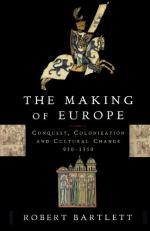|
This section contains 735 words (approx. 3 pages at 300 words per page) |

|
Origins. In premodern times, the world of European Jewry was violent, segregated, and insecure. Jews were required to live in separated neighborhoods known as "ghettos," had limited civil liberties, and often were prohibited from land ownership or craft-guild membership. Jewish institutions thrived in this segregated environment. In Jewish ghettos, economic activities shut down on the Sabbath; marriages and bar mitzvah ceremonies were community affairs; and children received sacred and practical instruction in Jewish schools. While ghetto life limited Jewish economic and political advancement in the Christian world, it provided Jews with a sense of community and a special appreciation for their heritage. During the late eighteenth and early nineteenth centuries, Jews across Europe slowly won new civil and political freedoms. Once emancipated from the ghetto, some Jews began to question the appropriateness of old Jewish customs. Many aspired to become integrated into society...
|
This section contains 735 words (approx. 3 pages at 300 words per page) |

|




